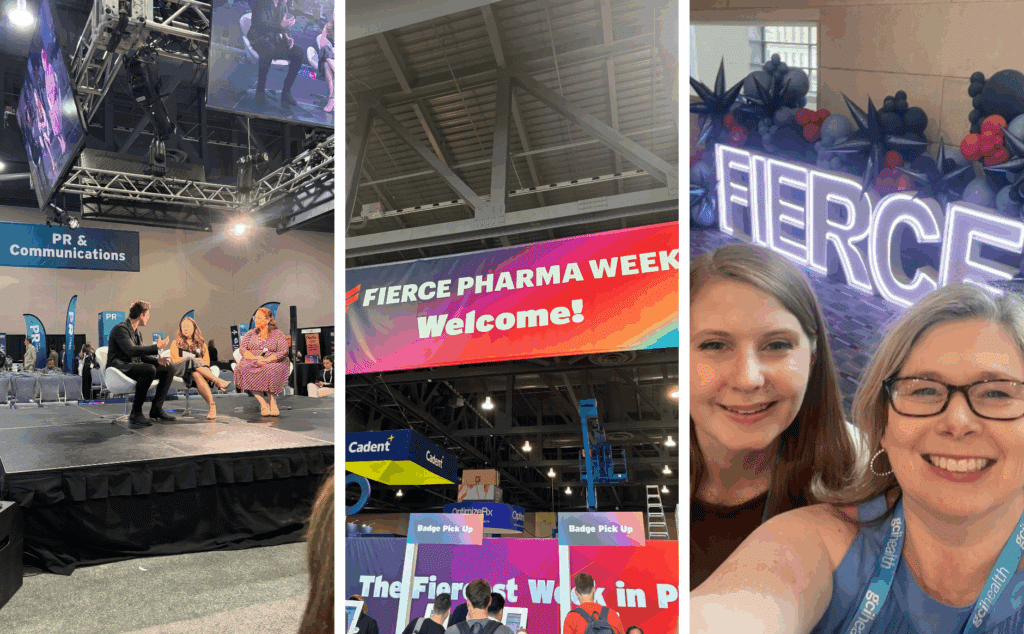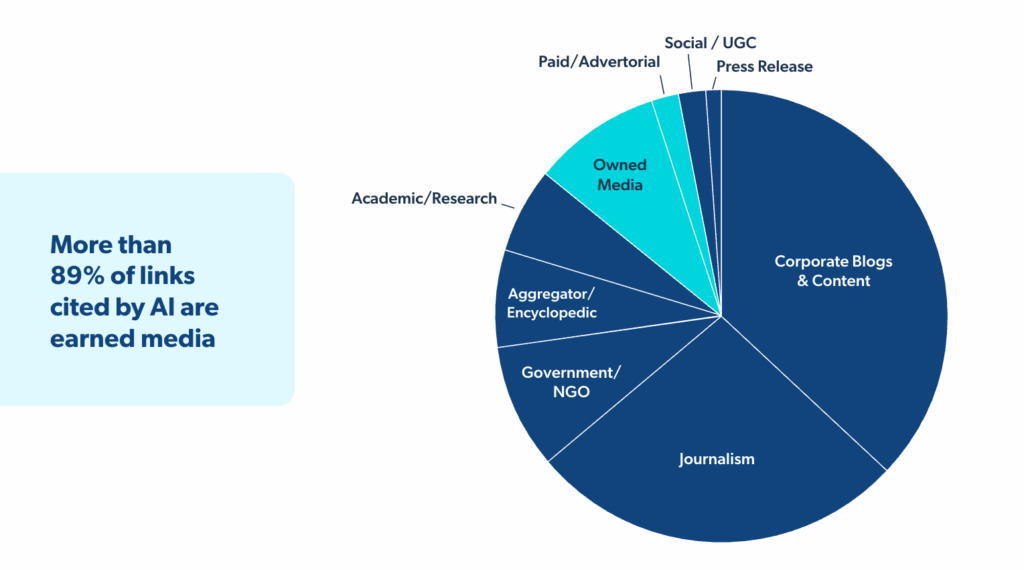Four Key Takeaways from Fierce Pharma Week 2025

Every day, we are inundated with news, thoughts and opinions about artificial intelligence (AI). Is it trustworthy enough to guide health care decisions? Will it replace the work of marketers, communicators and PR professionals altogether? Will I ever be able to use my beloved em dash again without judgment? Welcome to the Age of AI.
For many participants at Fierce Pharma Week this year, AI uncertainty lingered. But after a week of presentations and conversations, it’s clear that AI isn’t replacing public relations. In fact, it’s making it more critical than ever. Sure, our role may be evolving, but AI is ultimately a tool to help us be better storytellers, relationship builders and reputation managers. So, what does PR look like in the Age of AI? Here are the four biggest lessons from Fierce Pharma Week 2025:
1. The Blurred Lines Between Marketing and Communications
For the first time, this year’s Fierce Pharma Week brought together pharma marketing, commercialization, medical affairs and public relations/communications professionals under the same roof. The goal was to break down silos, but it was clear that the lines between our work, especially between marketing and communications, are already blurred.
Historically, public relations and marketing have operated separately, with comms professionals focused on reputation and narrative, and marketers on demand generation and pipeline. But as our work becomes increasingly digital, people now consume information across overlapping channels. What once were distinct functions have converged, marrying integrated storytelling and engagement strategies. For companies looking to build effective campaigns, it’s essential for marketing and PR teams to partner on a collaborative strategy using shared tools and data.
2. Move Over SEO, GEO is the Metric That Matters
For years, we’ve obsessed over SEO (search engine optimization) rankings. But now, GEO (generative engine optimization) is emerging as the new frontier. While SEO focuses on how search engines understand content, GEO helps companies understand how their content displays in generative results. This could include generative AI engines, such as Perplexity or ChatGPT, or the results at the top of search engine pages, such as Google AI overviews.
For search these days, people typically lean on information from AI summaries, instead of clicking on the blue links. One recent survey from Bain & Company found that about 80% of consumers rely on “zero-click” results in at least 40% of their searches, reducing organic web traffic by an estimated 15% to 25%. If your company isn’t surfacing in AI-generated answers, you’re likely becoming invisible to your key audiences.
So what’s the key to improving GEO?
To start, think of the questions your audience will ask where you are the answer. For example: “Where can I find a PR agency based in Washington, D.C., who can help me optimize my next big health care brand campaign?” The answer, of course, is CURA Strategies. Once you identify what your audience is looking for, you can develop content that directly reflects those questions. Since AI tends to favor listicles and other “snackable” content, infuse these digestible materials into your long-form owned efforts. Think blogs, articles, FAQs that are easy for AI to pick up, while still providing substance. Don’t just update your website — Reddit is a huge driver for AI-generated content. If you’re not already on, consider joining.
But AI isn’t just sourcing from your owned content; investing in your earned media strategy is essential to establishing the credibility and authority that generative AI cites.
3. The Resurgence of Earned Media in the AI Era
Not long ago, some industry leaders claimed that earned media was dead. It was hard not to believe them with the rise of sponsored content, influencer partnerships and paid campaigns seeming to push media relations aside. These channels will remain important, however, with people relying so heavily on AI to find information, AI holds significant power. But AI is powerless without being fed content. A recent Muck Rack report analyzing over one million links from AI responses found that over 89% of link citations are pulled from earned media results, which includes traditional journalism as well as academic research, blogs and other owned content.

It’s more important than ever to generate high quality, credible coverage so that your information comes up in gen AI engines or summaries. That said, where you win placements matters too. Since paywalled outlets like The New York Times and The Washington Post aren’t feeding AI models (yet) because their content is restricted, smaller regional outlets, niche blogs and trade media are becoming increasingly important. Consider adding another media list focused not just where people will see your content, but where AI will scrape it from.
Ultimately, companies that double down on authentic, earned coverage in reachable locations will be the ones that show up when people turn to AI for answers. But authenticity (another big word at Fierce Pharma this year) comes in many forms outside of earned media coverage.
4. The Rise of DOLs: Digital Opinion Leaders
If you work in any segment of communications, you know the influence of KOLs (key opinion leaders). But in our increasingly digitally-driven networks, DOLs (digital opinion leaders) are just as important to reach both health care providers and consumers.
With so much content online being generated by AI, audiences crave authentic human connection, and they’re finding it in DOLs: health care providers who have intentionally, or unintentionally, become social media influencers.
Leveraging these providers is especially useful because many trusted health care organizations, like the Centers for Disease Control and Prevention, were slow to build their digital presence in the early days of social media and have struggled to build momentum since. That gap created whitespace for physician voices to become the go-to sources for patients seeking clarity.
With so much misinformation circulating social spaces, many DOLs are increasingly passionate about their work to disseminate credible information and drive meaningful conversations to help patients regain trust in the health care system. Foregoing partnership with these leaders is a missed opportunity for organizations to not just reach your audiences, but build a more compassionate, patient-centric environment.
AI is Here, but PR is the Constant
AI is changing everything about how we create, distribute and measure content. But ultimately, it’s just a tool. And while the tools of our trade are changing, our goals and values as PR professionals remain the same: advancing your mission by building credibility and trust with the audiences that matter.
If there’s one thing to take away from Fierce Pharma Week, it’s clear that AI isn’t the end of PR. If anything, it’s demonstrated how human decision-making and connection is irreplaceable.
Are you ready to enter the Age of AI with your next communications strategy?

Laura Wagner
Account Supervisor
CURA Strategies
